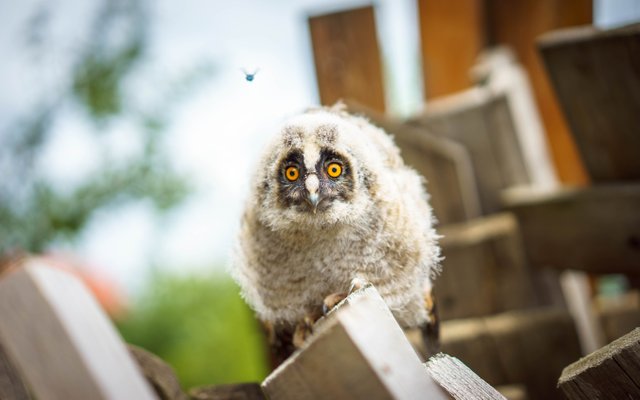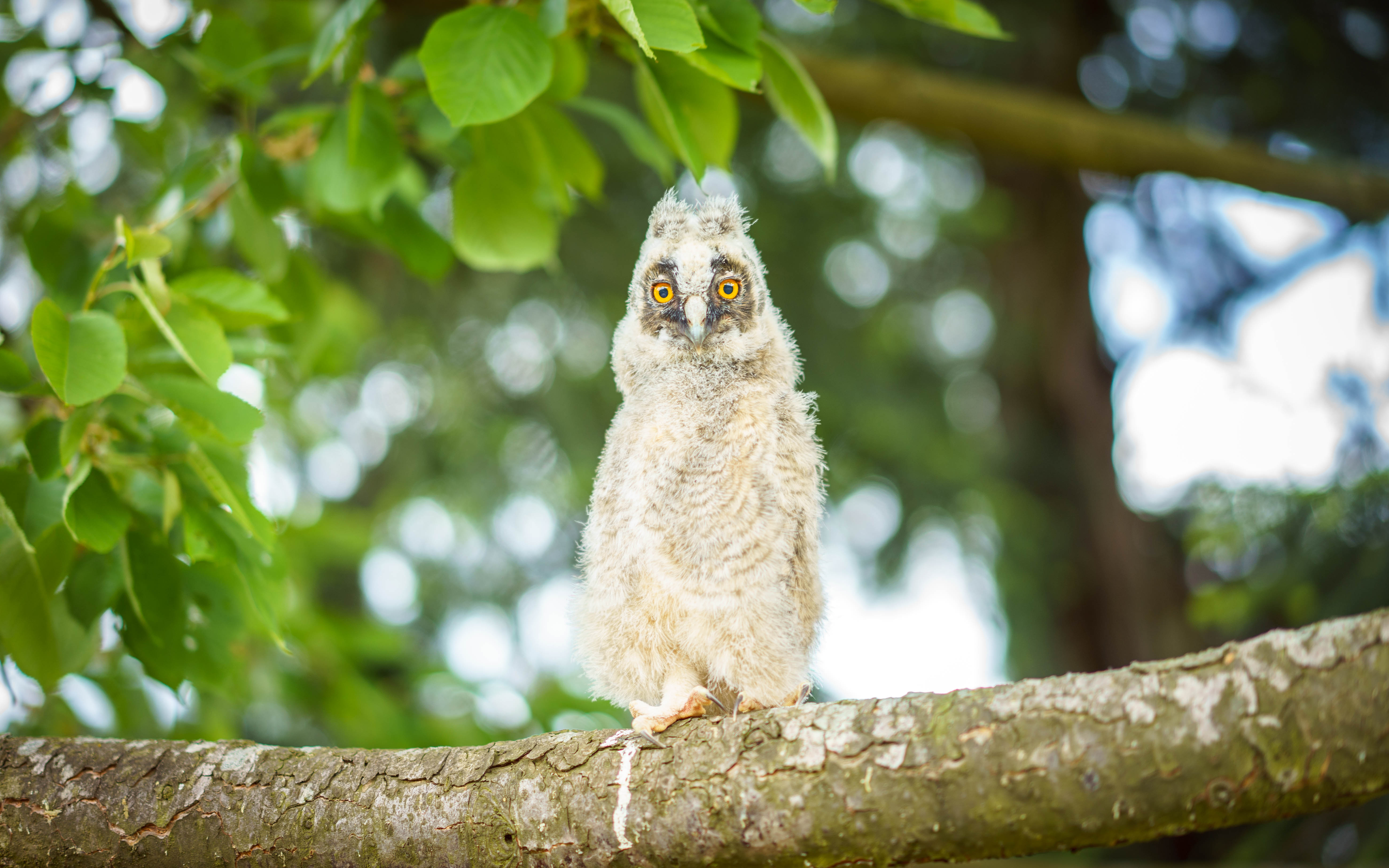What should you do if you find a baby owl?
The short answer to this question is that you should consider yourself a lucky person.
Enjoy looking at the owl for as long as you are tolerated and otherwise leave the owl baby alone. They have ways of taking care of themselves that are almost difficult to believe unless you actually see it happen.
We did just that the other day, when we found this little baby on some planks in our backyard. We were stunned and amazed at the same time.
Although it was tempting to come close and pet the little thing, we resisted cause we knew better. My sister took this video of it:
Baby owls may look very cute and helpless. But they have quite a bag of tricks under their feathers.
Owl babies have a different set of problems than many other baby birds when it comes to finding their place in the world.
For starters, adult owls are horrible nest builders. They typically use another bird’s nest from last year, a hole in a tree, a cliff ledge or even a flat sheltered spot on the ground to lay their eggs on or in.
This often means that the “nest” is not perfectly suited to the owl baby’s needs. It may be too small, too flimsy or provide insufficient protection from the elements. Some owls, great horned owls in particular, begin laying eggs when it is still ridiculously cold out.
To deal with exposure to the elements, baby owls have exceptionally effective feathers for insulation. In fact once they are a few weeks old, baby owls usually have a problem keeping themselves cool rather than keeping themselves warm.
And to deal with the cramping that comes with a nest that is too small, baby owls have a strong instinct to take care of themselves.

Generally, if you watch them when times are good, baby owls seem to enjoy each other’s company. But when times are tough and food or space is short, a bigger, stronger baby will bully a smaller sibling and even push the smaller one out of the nest if it feels too crowded. This usually means death for the baby that was pushed or fell out of the nest prematurely.
Once the owl baby actually decides to leave the nest, it is often not really ready. When baby owls get their wing feathers starting to grow, they will stand on the nest edge and flap vigorously.
This is hard on the nest since it generates a fair bit of force. The nest may be somewhat dilapidated anyway; it is usually an old nest. The nest may begin to fall apart long before the baby owls are ready to leave.
I have read that baby owls literally tear a nest out from underneath themselves and be left with only a few branches to hang on to. Or an owl baby may go to look out the tree hole and stand on the rim of the tree hole to try flapping its wings.
Then a sibling will come up from behind, also intent on getting a look out and actually push the one ahead of it into the open air. As a result, many owl baby’s first flights are for the most part, straight down.
Now the owl baby finds itself on the ground, unable to fly and unable to catch its own dinner. What does it do?
Well if you walk up to it and try to touch it, it is likely to make a hissing sound or clap its bill making a loud intimidating sound.
That is meant to frighten you and make you back off. If that doesn’t work, it is likely to spread its wing feathers and lift them up over its back so that it will appear many times bigger than it is.
If that still doesn’t intimidate you, it may roll on its back and stick its talons in the air, weapons to back up its earlier bluffs. If you leave the baby owl to its own devices, however, it will walk along the ground until it comes to a tree that seems to suit it.
It will then flap its wings as hard as it can while it walks up the side of the tree. It will then eventually find a horizontal branch and walk out on this branch to perch.
It will then sit there and scream and scream and scream to be fed. It may end up 50 feet up a tree, a hundred yards from its nest, without being able to fly.
Unless you actually see it happen, it’s difficult to imagine how the little ball of fluff achieved the feat.

Baby owls are cute and will be prowling our gardens and driveways over the next two months as they start their lives in the world. If you see one, it may seem like it needs your help, or may look so cute you want to pick it up. Resist the temptation.
Let the baby owl go about its business. They are much better equipped to take care of themselves than they appear.
Hi! I am a robot. I just upvoted you! I found similar content that readers might be interested in:
http://bismarcktribune.com/lifestyles/outdoors/what-to-do-when-you-find-a-baby-owl/article_899715ee-483e-11df-9838-001cc4c002e0.html
Downvoting a post can decrease pending rewards and make it less visible. Common reasons:
Submit
Yeah, I took most of that article and added some of mine experience with the owl. :) Thanks for that!
Downvoting a post can decrease pending rewards and make it less visible. Common reasons:
Submit